In The Hot Zone: Oscar-Nominated Documentarians Put Their Lives On The Line To Shed Light On War, Dictators, Injustice
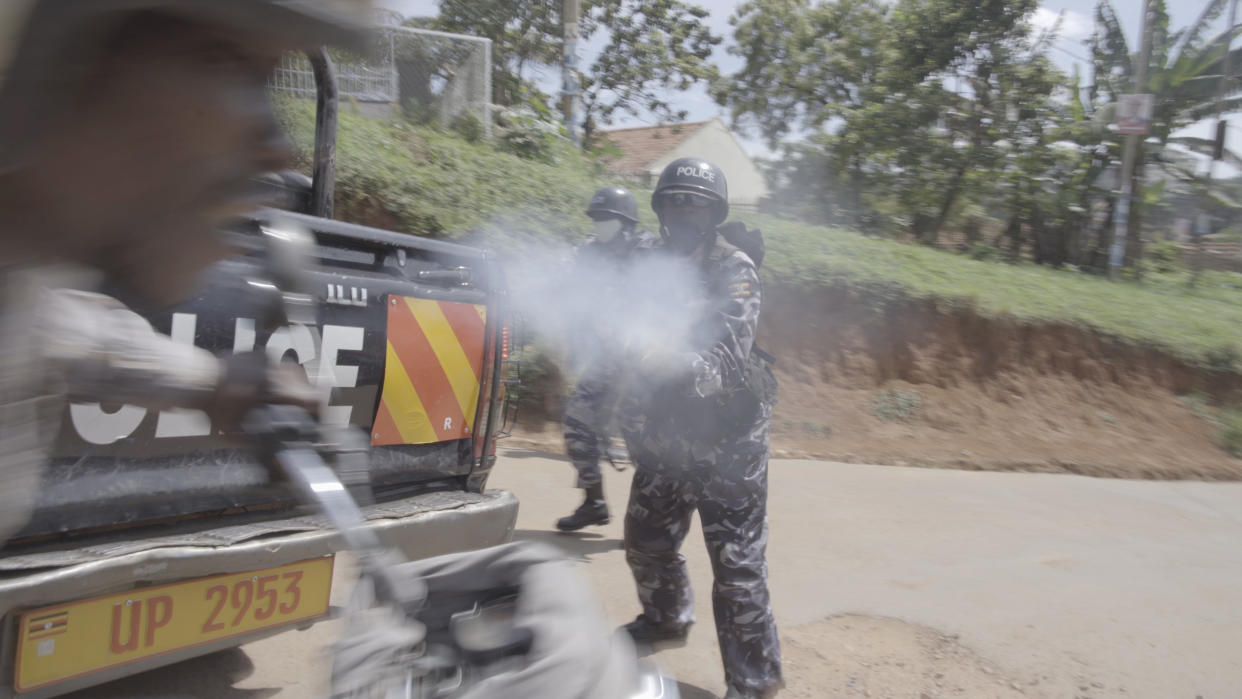
- Oops!Something went wrong.Please try again later.
- Oops!Something went wrong.Please try again later.
- Oops!Something went wrong.Please try again later.
- Oops!Something went wrong.Please try again later.
- Oops!Something went wrong.Please try again later.
In the opening moments of 20 Days in Mariupol, Mstyslav Chernov’s chilling account of the siege of the Ukrainian port city, a Russian tank marked with the ominous ‘Z’ swivels its turret toward a hospital. On an upper floor of the building, Chernov and his small team record as the cannon slowly rotates towards them, preparing to fire.
“The tank did shoot the hospital right above the floor we were at,” he says. “It hit between the fifth and sixth floors and a patient was killed with that shell.”
More from Deadline
It was one of many times he put his life at risk to show the Russian army’s destruction of the city and its systematic targeting of civilians. He remembers feeling his life was about to end.
“Exactly in that moment in the film, this moment of uncertainty, the moment when tanks are shooting at the residential areas, when the hospital is surrounded and we are trapped, that’s what I’m thinking about,” he recalls. “I’m thinking about my family, about my daughters, the fact that I probably will not make it out alive.”
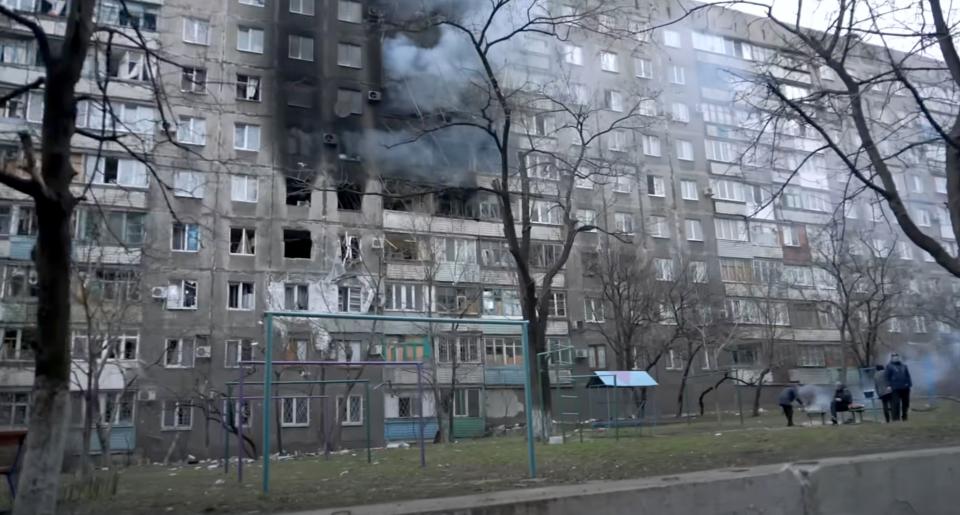
For as long as documentaries have been made, filmmakers have been willing to sacrifice their own safety to tell stories rippling with danger. A number of those films have gone on to earn Academy Award nominations. Sebastian Junger and Tim Hetherington captured ferocious firefights in Afghanistan between the Taliban and U.S. forces for their 2010 film Restrepo (a year later, Hetherington would be killed covering the civil war in Libya).
Director Evgeny Afineevsky headed into the heart of the Maidan Revolution in Ukraine to make his 2015 Oscar-nominated film Winter on Fire: Ukraine’s Fight for Freedom. Peaceful protests against the Russian-allied government turned violent when troops opened fire on demonstrators, killing dozens of people. “I was too busy documenting to worry about the bullets flying over my head or the batons coming down,” Afineevsky has said.
In recent years, Feras Fayyad (Last Men in Aleppo), Talal Derki (Of Fathers and Sons), Waad Al-Kateab (For Sama), and Matthew Heineman (Cartel Land) have put themselves in serious jeopardy to complete their Oscar-nominated films. Going further back, combat cameraman Pierre Schoendoerffer filmed battles between American and North Vietnamese soldiers for his 1967 Oscar-winning film The Anderson Platoon.
Chernov is not the only Oscar-nominated filmmaker this year to have faced mortal peril while shooting his film. If not for his camera, Ugandan filmmaker Moses Bwayo might have been killed while making Bobi Wine: The People’s President, which he co-directed with Christopher Sharp. A potentially fatal incident unfolded in November 2020 as Bwayo traveled alongside a motorcade transporting Bobi Wine, the Ugandan pop star-turned-politician who was running for president against the country’s dictator, Yoweri Museveni.
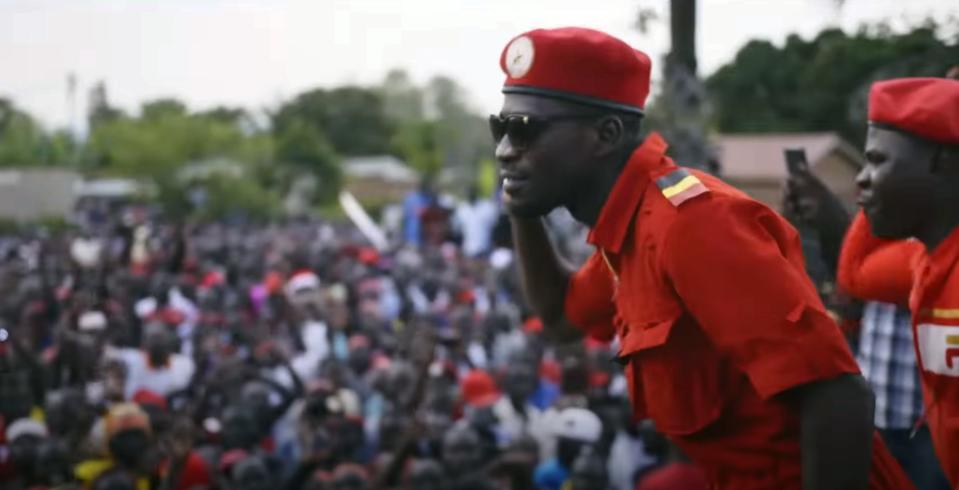
“I was on a motorcycle and filming,” Bwayo says. Ahead, security forces loyal to Museveni had erected a barricade. “They started shooting teargas, bullets. This military man makes eye contact with me. And then he puts his gun up, cocks the gun. I had a camera in my hand, so I just put it up to my face. And the guy shot. I was shocked. The projectile hit the camera, and the camera helped change its direction [but the bullet] still hit me in the cheek… I hit the ground, blacked out for a few minutes. I had never felt such excruciating pain.
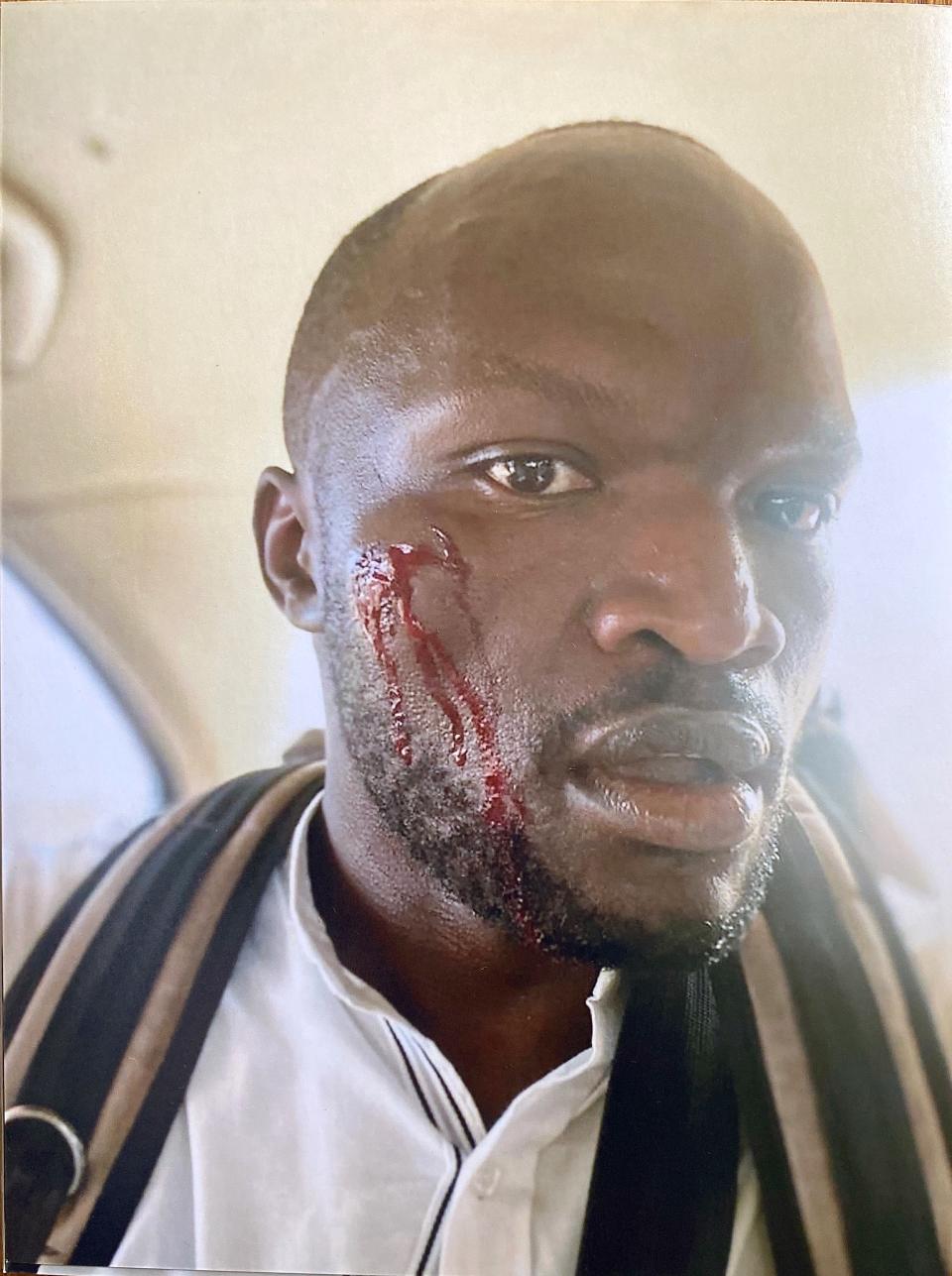
“My face swelled, and I was bleeding,” he says. “I just woke myself up very quickly. But shockingly, the guy was literally standing right on top of me, and he was aiming for another shot. And that’s when I started running. And there was a motorcycle going past. I jumped on it and told the guy to drive away. And that’s how I got out of that situation.”
His loved ones urged him to abandon the documentary, he says. “Everyone was calling and saying, ‘Look, Moses, you don’t have to do this. This is a brutal regime. This is not going to change.’ But this story, it’s a national story. For the first time in the history of our country, here was a charismatic leader, young, who was offering himself to lead the youth… and the oppressed people of Uganda, to liberate themselves. The story overshadowed the risk.”
For Indian Canadian filmmaker Nisha Pahuja, director of To Kill a Tiger, risks mounted the more she pursued her documentary, set in India’s state of Jharkhand. The film tells the story of Ranjit, a poor farmer, whose 13-year-old daughter Kiran became the victim of a brutal sexual assault by three young men. Ranjit and his wife Jiganti came under enormous pressure from villagers to absolve the attackers and marry off their daughter to one of her assailants. They refused.
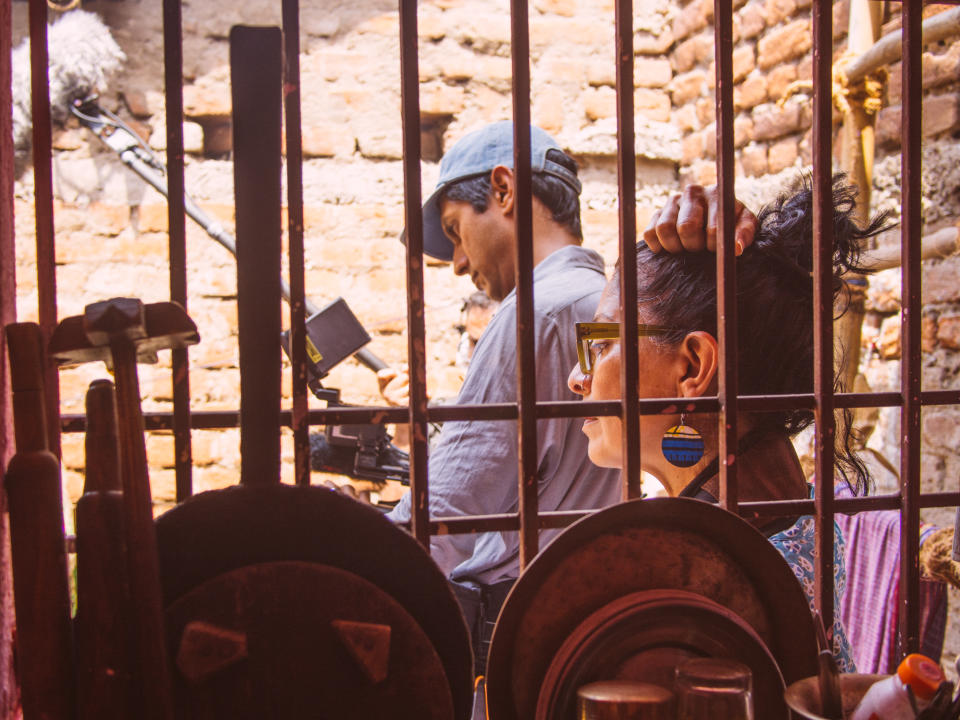
“As the case progressed and as it became apparent to everyone in the community that in spite of all of their efforts, the family was not going to drop the case and that they were going to pursue justice, things started to become increasingly intense,” Pahuja says. “The family was threatened, the crew was threatened… There were many, many different ways to try to get the family to drop the charges, but they persevered.”
Pahuja and her team were filming in Ranjit’s humble dwelling when angry villagers converged, threatening to burn down the house with the family and film crew inside. It was the culmination of a growing sense of unease for the director, who had rented a house outside the village while making To Kill a Tiger.
“I was a woman; I was by myself. I knew that things were tense. I knew that it was problematic. I knew what I was doing was rocking the boat. I was living in this house on my own,” she says. “I was definitely conscious and looking over my shoulder…”
On To Kill a Tiger, the presence of cameras served both to provoke and protect. “Our primary concern was the family and how did they feel, and what did they want us to do? Did they want us to keep filming? Should we stop? And they didn’t,” Pahuja says. “They wanted us to keep filming… They understood that the camera actually afforded them a kind of protection. They felt that because we were filming, nobody would ever do anything. They would think twice.”
By contrast, Chernov knew that carrying a camera — and wearing a bulletproof vest marked “Press” — would not shield him in Mariupol. The Ukrainian filmmaker says for countries like Russia, “information is a weapon. And by extension, journalists are soldiers, which is a very disturbing thing because that makes us a target, that makes documentary filmmakers and journalists — every person with a camera — a target.”
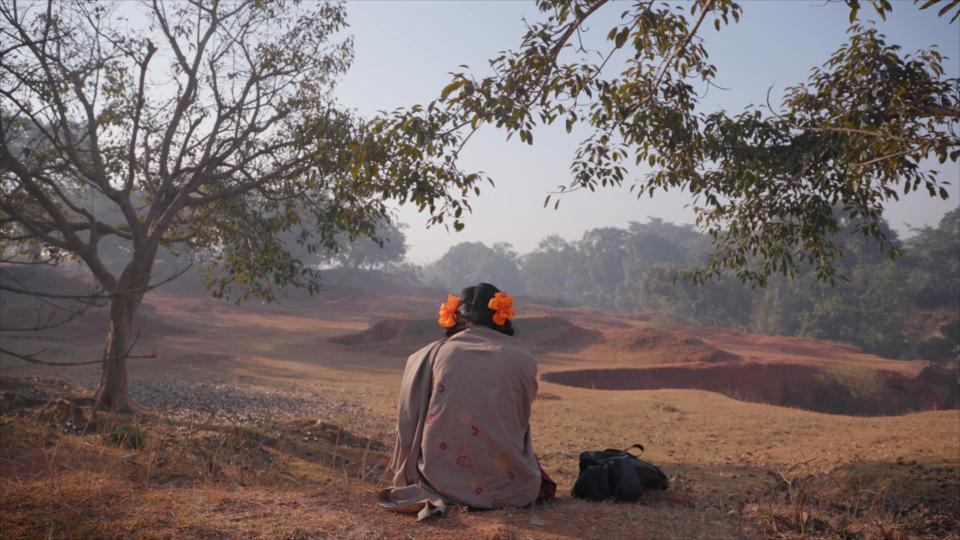
His long experience in conflict journalism — covering wars in Iraq, Syria, Libya, Nagorno-Karabakh and elsewhere for the Associated Press — told him that Mariupol was likely to be a hotspot if Russia launched a full-scale invasion of Ukraine. He headed there hours before Russia attacked, but not before making last-minute preparations to mitigate risk.
“We bought extra spare tires; we bought a lot of food. And I remember the night before the invasion, everybody looked at us as crazy people and they were asking, ‘What are you doing? Why do you need two spare tires at 3 o’clock in the morning? Why are you buying kilos and kilos of food and dozens of cans of food in the middle of the night?’” he remembers. “And my answer was, “Well, the war is going to start.” We rented at least two places where we could stay in different sides of the city depending on where Russians would be coming from, or if the electricity was [out] in one neighborhood and not in another one.
“Even if people don’t believe you or think you’re crazy, these preparations are very important,” he says. “And then there were preparations about communication, the backup plans for escape. Every time you speak to the editor [at AP], it starts from a security assessment. What’s the closest shelter? Where is the closest medical evacuation point? Where is the frontline currently? And so on and so forth. I think that allowed us to survive, those preparations and that experience.”
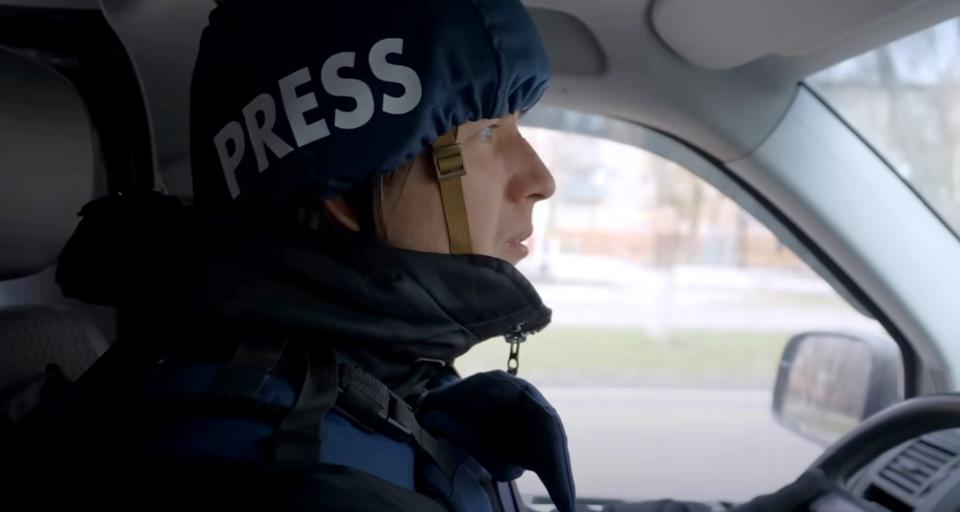
Making Bobi Wine: The People’s President confronted Bwayo with a dilemma — stay in Uganda and tempt fate or leave his homeland and his extended family behind. He says after his wife twice became the target of attempted kidnappings, he made a decision.
“That was the point when [co-director] Christopher Sharp, myself, and [producer] John Battsek realized we had to flee the country,” he recalls. “In March 2022, after I shot the last scene of the film, we left Uganda not knowing if we would return.”
He and his wife took refuge in the United States, where they are raising their 19-month-old son Joshua. While their application for political asylum is being considered, they can travel within the U.S. but no further. “If I left the U.S. borders, I would never be able to return. So, I’m grounded within the U.S. But again, it could be worse,” he says. “People lost their lives to repression in Uganda, to the regime. But I’m alive. I’m thankful for that. And the attention that the film has gotten is really appreciated. And it really goes far to highlight the fight for freedom and democracy in Uganda and upholding democratic values around the world.”
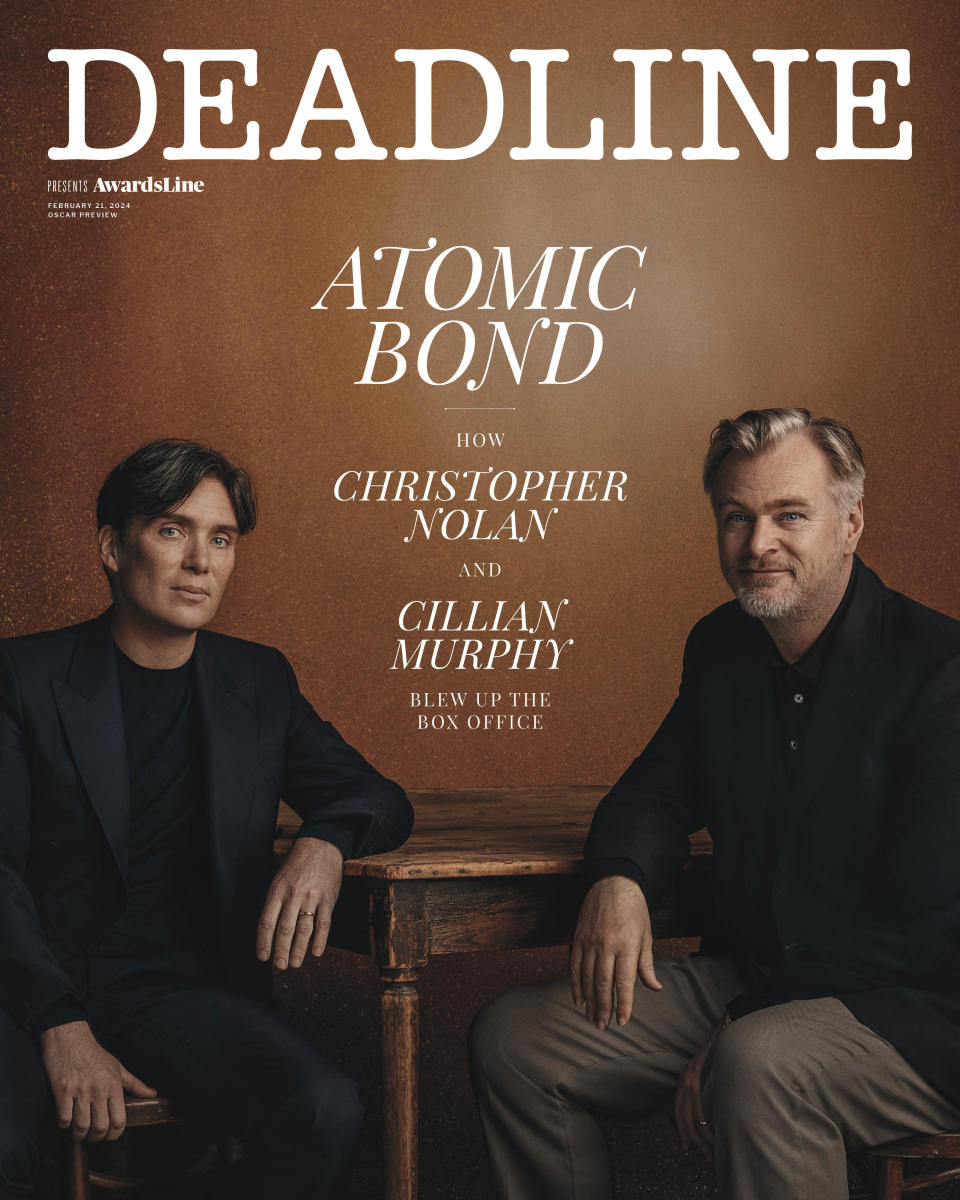
A sense of a higher obligation took Chernov away from his family to make 20 Days in Mariupol. His youngest daughter was only six months old when the war erupted. After international journalists evacuated Mariupol for safety reasons, the director and his team remained behind, understanding that without visual documentation the world would not grasp the scale of the tragedy — the thousands of innocent children, women and men killed in Russia’s merciless assault.
“The worst thing is that when you don’t have a record of anything, this empty space is filled by false narratives generated by the perpetrators,” Chernov says. “I think it is incredibly important to make sure that every shot, every minute that was recorded in Mariupol — but also in other places in Ukraine now, that we don’t necessarily see in the news — is being recorded and preserved, because the time will come when everything will be questioned, everything will be denied. And in that moment, having these records is crucial for Ukraine’s history and for the world’s history.”
cnx.cmd.push(function() { cnx({ settings: { plugins: { pmcAtlasMG: { iabPlcmt: 1, } } }, playerId: "1d932e57-b397-4448-b4b7-d30563744457", mediaId: "6f7a13ae-3ba7-4dee-b1f8-c31e608d3a76", }).render("connatix_contextual_player_6f7a13ae-3ba7-4dee-b1f8-c31e608d3a76_2"); });
Best of Deadline
Berlin Film Festival 2024 Red Carpet: 'Spaceman' Premiere On Day 6
Hollywood & Media Deaths In 2024: Photo Gallery & Obituaries
2024 Premiere Dates For New & Returning Series On Broadcast, Cable & Streaming
Sign up for Deadline's Newsletter. For the latest news, follow us on Facebook, Twitter, and Instagram.

